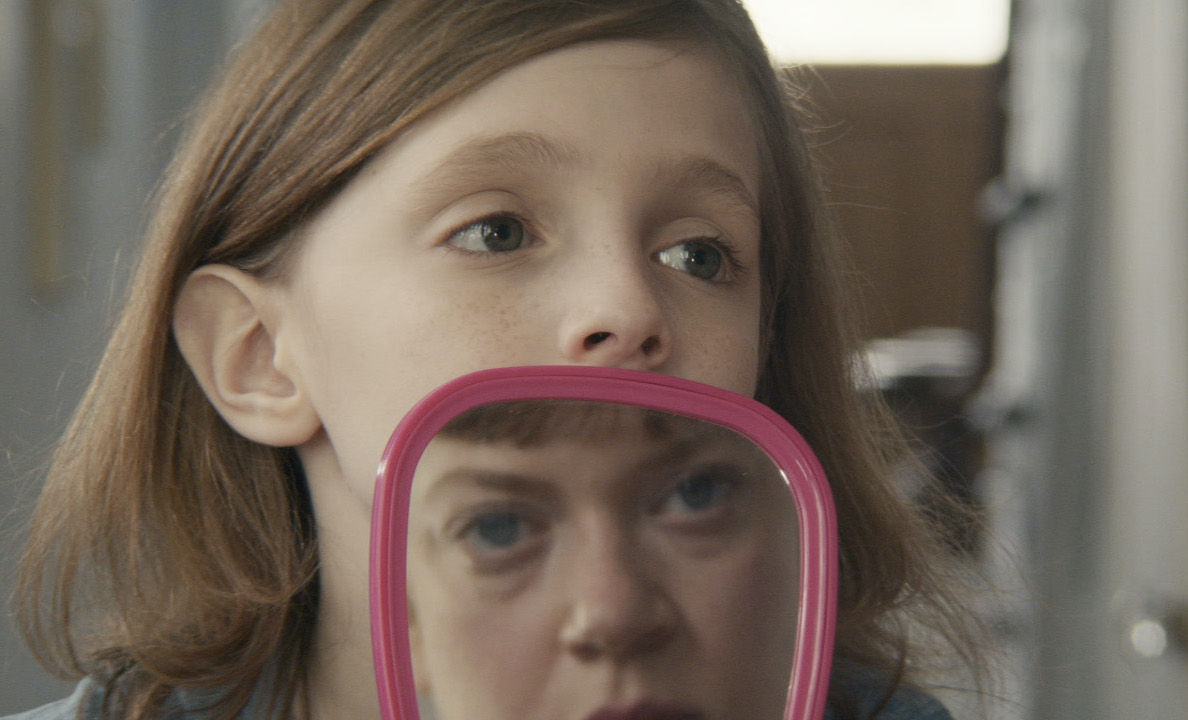Still by Cinedigm
“Homebody” is a new film written and directed by Joseph Sackett that follows a young boy, Johnny, when he body swaps with his babysitter, Melanie. Coming in at only an hour and 15 minutes, “Homebody” packs in a storyline ripe with self-discovery. It communicates an overall theme of rebirth as a metaphor for queerness and identity inspired by Sackett’s own childhood growing up genderqueer.
At first glance, it seems that Johnny has quite the crush on Melanie, albeit a more obsessive one than is normal; in voice-over, Johnny says things like, “I had a dream about Melanie, my babysitter and my best friend. In the dream, I was your baby and it was just you and me, together, forever.” The camerawork, masterminded by Laura Valladao, does a beautiful job of capturing Johnny’s admiration of Melanie, featuring her as the sole focus in many frames, whether she be in a dream-like state, haloed by sunbeams, or seen through the lens of a camera, poking her tongue out playfully.
After Johnny and Melanie watch a video on free spirit meditation — a way to release your spirit from your body to float around or possess objects and people — Johnny tries, and succeeds, to possess Melanie’s body, burying her spirit in her subconscious and allowing Johnny to live in her body. Astonished, he explores the intricacies of the female body and clothing and navigates the world as Melanie. But, as any body swap movie goes, things go awry as Johnny realizes he can’t quite act like an adult woman as well as he thought he could. Colby Minifie, Melanie’s actress, brilliantly plays out the times when Johnny’s acting slips and the mannerisms of a child shine through.
A young boy living in a woman’s body for the first time could be a very on-the-nose metaphor, but “Homebody” offers a unique perspective on queer identity by tying it to the theme of birth, using the literal miracle of childbirth as a vessel to represent the joy in discovering your own queerness. The film stands out from body swap movies in its queerness, and stands out from queer movies in its uniquely innocent, childish view on what it means to be genderqueer and the unique ways that people can explore their gender identities. Johnny’s story is devoid of the trauma and pain that usually characterizes popular queer media. This is a breath of fresh air because as much as oppression is painfully entwined with being queer for many, it is also important to show queer kids the other side: the joy and fierce pride in finally figuring out who you are.
Through his journey, Johnny realizes that being the same is not the same as being together, and imitation is only the first step to discovering your identity. Through Melanie’s eyes, he experiences way more than any normal kid his age would, including an undefined situationship, catcalling, and a water birth. From his adventure in Melanie’s body, he finds the courage and knowledge to express himself.
In the first scene, Johnny holds a tube of Melanie’s lipstick hesitantly, hiding it when his mother comes in, but by the end of the movie, he paints it on his lips and smiles at his reflection in the mirror with a new joy. The cyclical narrative of this movie means that the ending is an echo of the beginning — yet another note in the theme of rebirth — but with new implications for old scenes and a hope for the future that wasn’t there before. With its light color palette and ethereal scenes of spirituality, “Homebody” reexamines old stories in a new light and represents queerness in a bright, hopeful way that queer kids everywhere can look to and find parts of themselves that they didn’t know they had.
“Homebody” is now in theaters in Los Angeles and is coming to Fandor and digital on Dec 6.
Credits:
Author: Emma Blakely (They/She/He)
Copy Editors: Charis (She/Her), Bella (She/They)

